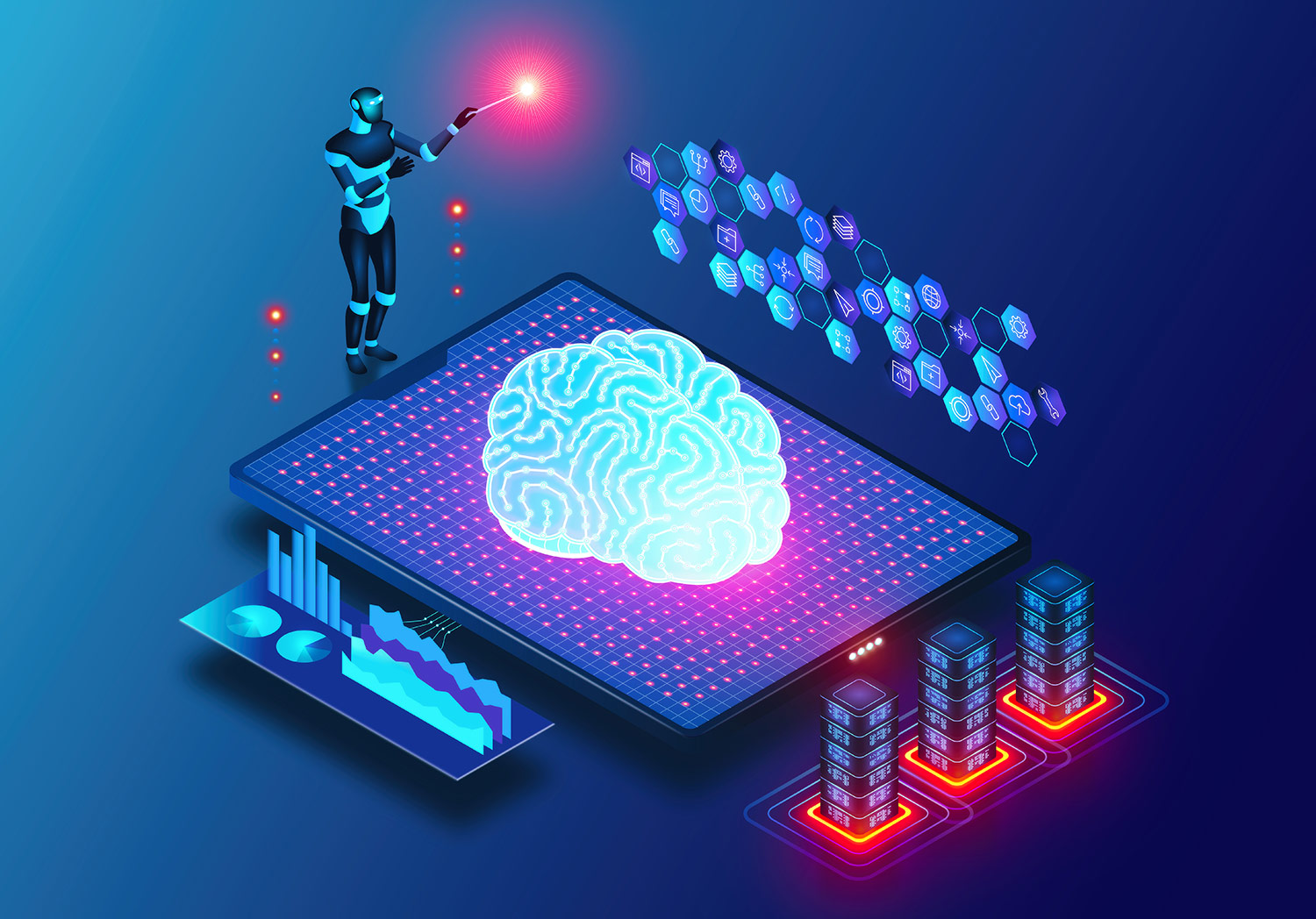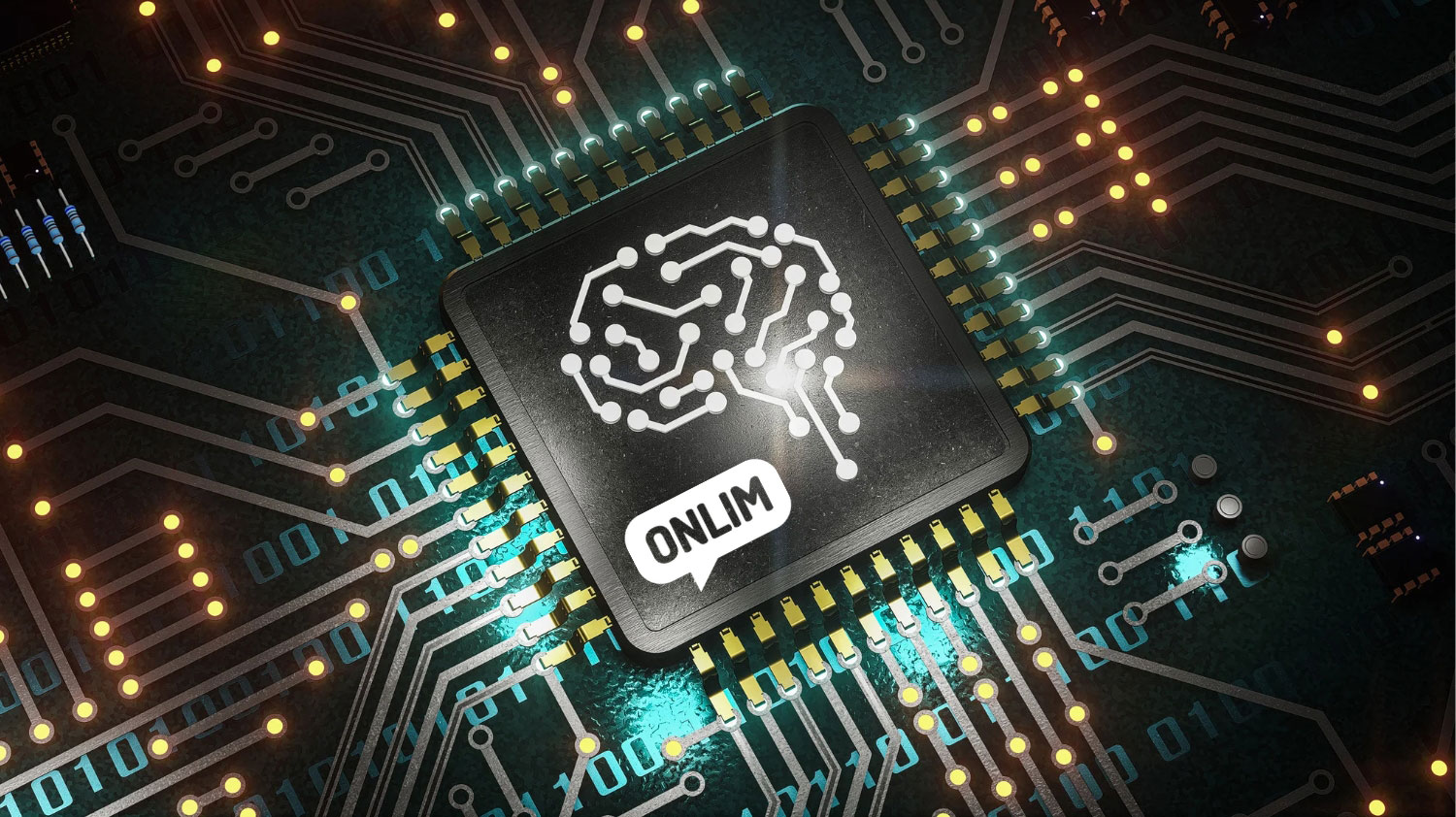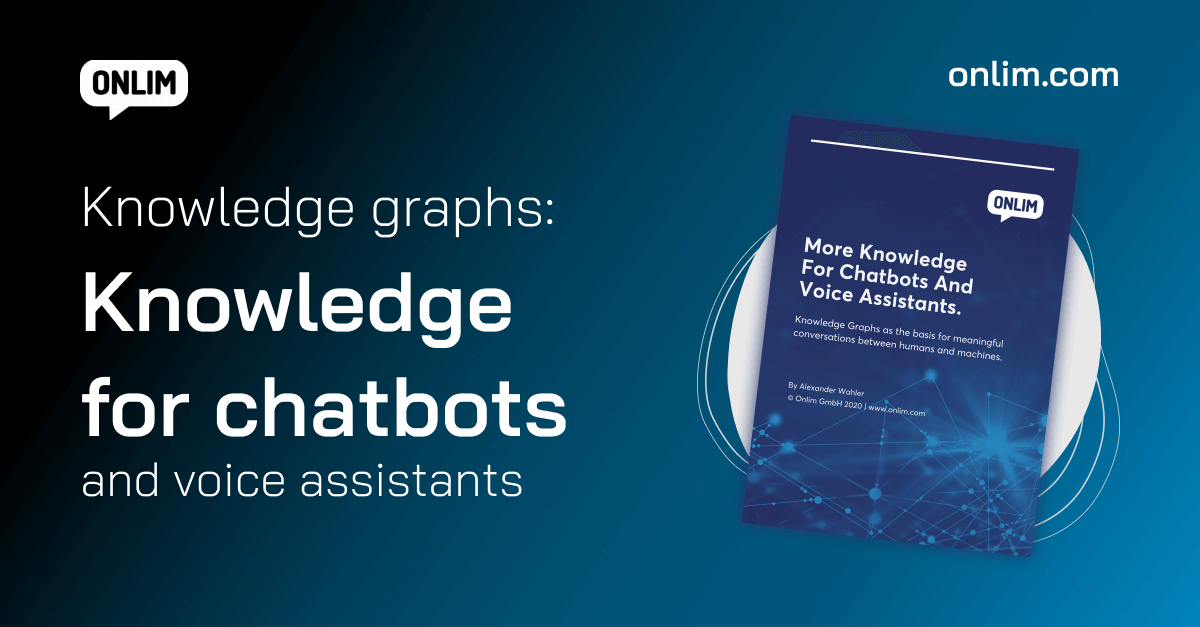What Is Hybrid AI And What Are Its Benefits For Businesses?
Hybrid artificial intelligence is usually understood as the enrichment of existing AI models with specially obtained expert knowledge. At Onlim, we see things a little differently. We think this approach does not go far enough. That’s why we are pursuing a more comprehensive approach toward hybrid AI.
What this approach looks like, why we chose it, and what added value it provides to you as a company – that’s what you’ll learn in this article.
Hybrid AI – A much-debated necessity for AI solutions?

Hybrid AI is currently one of the most debated topics in the field of AI. The term “hybrid” is of Latin origin and basically refers to the result of two different types or species.
Applied to artificial intelligence, it generally refers to the extension or optimization of AI models based on machine learning, deep learning, neural networks with human (domain-specific) expert knowledge in order to develop/create domain- or use-case-specific AI models with maximum accuracy or prediction probability.
In fact, this is a valid and important point. AI models trained on large datasets often do not have sufficient effectiveness to provide their full benefit or contribute value in specific use cases or domains.
In these cases, adoption or enrichment by domain-specific expertise is the best way to achieve a high prediction probability of the model.
What is hybrid AI?

At Onlim, we define Hybrid AI differently. We believe that it requires a more comprehensive, holistic approach in organizations to sustainably realize the full benefits of AI solutions.
For this, we first need to introduce and briefly explain two different areas of AI: symbolic and non-symbolic AI.
- Symbolic AI: With symbolic AI people try to link facts and events by logic rules and make this knowledge machine-readable and retrievable by semantic enrichment.
- Non-symbolic AI: This area includes models in machine learning, deep learning, and neural networks, where a lot of training data is used to try to get conclusions, and decisions, statistically speaking. This is also the case when we provide a text and the Natural Language Understanding (NLU) component interprets it and provides the correct output.
The classical view is to see symbolic AI as a “supplier” of non-symbolic AI, which then does the work. From this perspective, the symbolic AI provides the non-symbolic AI with relevant training data.
At Onlim, we have a different paradigm: we see symbolic AI, i.e. the structuring, preparation, and enrichment of organizational data and knowledge (facts, events, semantics, logic) into a machine-readable form as an essential task that already creates a lot of added value on its own. The preparation takes place in the form of the data structure of the future – the Knowledge Graph.
Hybrid AI is more than a combination of symbolic and non-symbolic AI
Hybrid AI must be more than a combination of the approaches of symbolic and non-symbolic AI. Symbolic AI and its result – a Knowledge Graph – are already an essential asset for an enterprise.
We define Hybrid AI (specifically for the area of Conversational AI) as the structured, downstream, thorough, and unified use of symbolic and non-symbolic AI to capture, map, structure, and make all available data or knowledge of an organization readable, understandable, and retrievable by machines so that this knowledge can be retrieved in natural language – the easiest access mode for humans.
Let’s make this statement more concrete with a few examples:
- In the field of self-driving cars, symbolic AI specifies, for example with map data, where obstacles, traffic lights, stop signs, etc. are located. These data and facts bring clarity and facilitate the autonomous control of the vehicle. Independent of its non-symbolic training with training data.
- In the retail sector, the product database of a fashion store, for example, represents the symbolic AI. Clear facts such as color, size, combinability with other products can be included very easily when querying product data of a piece of clothing via voice assistants/chatbots.
- In the event management industry, the symbolic AI would be represented in the event database. Let’s say, for example, a concert by the band “Bilderbuch” is organized. If this fact is in the database (possibly extended by a genre, etc.) the chatbot or voice assistant can correctly recognize the meaning and context of a query for “Bilderbuch”. It won’t confuse the expression with a picture/storybook which in German also means “Bilderbuch”.
How does Onlim use the hybrid AI approach?
We always start with the symbolic AI, i.e. with the collection, processing, structuring and linking or enrichment of organizational knowledge (facts, events, etc.) in a Knowledge Graph.
This is the basis for us to develop effective AI models. Then the non-symbolic AI is trained based on the Knowledge Graph. In addition, the Knowledge Graph can be extended in real-time. For that, we use external services, such as Wikipedia, databases, encyclopedias, etc.
More Knowledge For Chatbots And Voice Assistants

How do companies benefit from this holistic hybrid AI approach?
This approach offers the ultimate advantage: maximum scalability. New products or events can be added very easily, just the new specifics have to be added via the Onlim Conversational AI platform, but the process remains the same.
For the customer, a clear added value arises through the cooperation with Onlim. In fact, it goes far beyond the development of a natural language-based chatbot or voice assistant:
- Knowledge Graph development: As a starting point of developing any chatbot/voice assistant, we develop a Knowledge Graph for our clients. We see the Knowledge Graph as the data structure of the future. It will be the basis of all further AI-based use cases.
- Process implementation: Organizations cannot avoid the digitization and preparation of organizational data. Therefore, the development of a Knowledge Graph becomes inevitable sooner or later. Onlim implements the organizational processes and workflows that will be required for regular knowledge documentation and updating in the future.
- Contribution of decades of know-how: Collectively, the Onlim team has several decades of experience in Knowledge Graph development. Customers can benefit and learn from this massive wealth of experience while achieving their goal of implementing a chatbot/voice assistant.
- Maximum convenience: Onlim takes care of the details in the background, while companies can concentrate on preparing and adding information. Via the Onlim Conversational AI platform, all information can be easily updated or adapted at any time.
- Holistic process: Onlim accompanies customers through all phases of the process. From preparing knowledge in the form of a Knowledge Graph, to equipping chatbots or voice assistants with the ability to understand the data, provide customers with suitable answers, as well as letting customers carry out desired transactions such as purchases.
Let’s have a look at a concrete example.
A practical example of hybrid AI in use
A prospective customer contacts an event organizer because he likes a music event. First, he asks about upcoming music concerts in his/her city (discovery phase). Then the prospect inquires about a concert by a specific band.
Other questions such as event location, event time are also asked. This is taken into account and documented in the Knowledge Graph. Then the customer asks about the availability of tickets, whereby specific ticket categories (adults, youth, older people) or ticket classes (seats, standing area) can also be taken into account.
After gathering all the information, the customer is redirected to a ticket booking service. Of course, all the given data is taken into account. Now the customer can conveniently buy the desired ticket in a natural language-based dialog via the chatbot or voice assistant.
What added value does well-structured, processed data offer?
It’s clear that the preparation of knowledge initially takes some effort. So how can this effort be justified? Very simply, in fact, if you really know the true added value of a well-structured, prepared Knowledge Graph.
It is about being able to query knowledge easily and quickly via natural language in order to
- be able to make better decisions based on a better database and
- to be able to initiate the desired action or transaction based on the decision (e.g. purchase).
However, the reality in organizations looks like this: Data is becoming more and more diverse; it is sometimes incomplete, not correctly described, incorrectly linked, and consequently prepared or put out differently. During the Corina crisis, for example, the impossibility of informally inquiring colleagues in the office revealed the weaknesses of incomplete knowledge documentation.
As products, devices, and solutions become more complex, however, customers and employees need information more frequently and precisely than ever before. The only realistic and best way to make this information accessible and usable is in the simplest form: via natural language, whether in written or spoken form.
Employees and customers expect and reward this ease of use; companies must therefore create the necessary basis with a Knowledge Graph.
Ultimately, companies benefit from maximum automation
The ultimate benefit for the enterprise is enterprise automation. This becomes possible because we can map the whole process from preparing knowledge, retrieving knowledge for decisions, to being able to do transactions after decision making in natural language.
With this process, we have documented the essential customer journeys, also “internal journeys” of companies or internal customers. We expect to see much more automation in this area in the future. Customers will not only use voice assistants to obtain information, but also to take action and make purchases.
A chatbot or voice assistant can answer hundreds of queries for customer service or internal staff in a single day. All of it in an automated and autonomous way. This makes it easy to imagine how quickly and how many times the investment in knowledge preparation and development of digital assistants can actually pay off for companies.
Development of a Knowledge Graph: Not “if?” but “when and how?”
Every company has to process knowledge, otherwise, they will soon have to give way to their competition. Everything that exists in data silos, CSV files, etc. will be forgotten if it is not digitized.
It doesn’t matter how good the search engine is. Similar to analog images, non-digitized data will sooner or later be impossible to find and use, so processing data must be addressed as quickly and effectively as possible.
What’s the effort for customers?
The extent of the customer’s contribution depends on the current state of structuring and preparation of data. Existing databases, FAQs, and more can be adopted and used as the basis for building the Knowledge Graph.
If further information needs to be obtained, this can be done with the help of knowledge forms. Onlim provides them for dozens of industries. In rare cases, expert interviews are required. In that case we will obtain the data and build and expand the Knowledge Graph accordingly.
We also take care of the entire technical part. We process the data in the Knowledge Graph and apply the corresponding logic and semantics. The combination of symbolic and non-symbolic AI works so well through the fact-based structuring of the knowledge that a dynamic human-like conversation becomes possible.
Once the groundwork has been done and the solution has been implemented, the customer only has to worry about updating or adding information on an ongoing basis, if necessary. This can be done conveniently and in a few simple steps directly via the Onlim Conversational AI platform.
If you have any questions or would like to talk about using hybrid AI for your business, our experts are happy to help.
Retrieval Augmented Generation (RAG)
July 10th, 2024|
Is a voicebot right for my company?
June 18th, 2024|
What is Generative AI?
June 11th, 2024|



